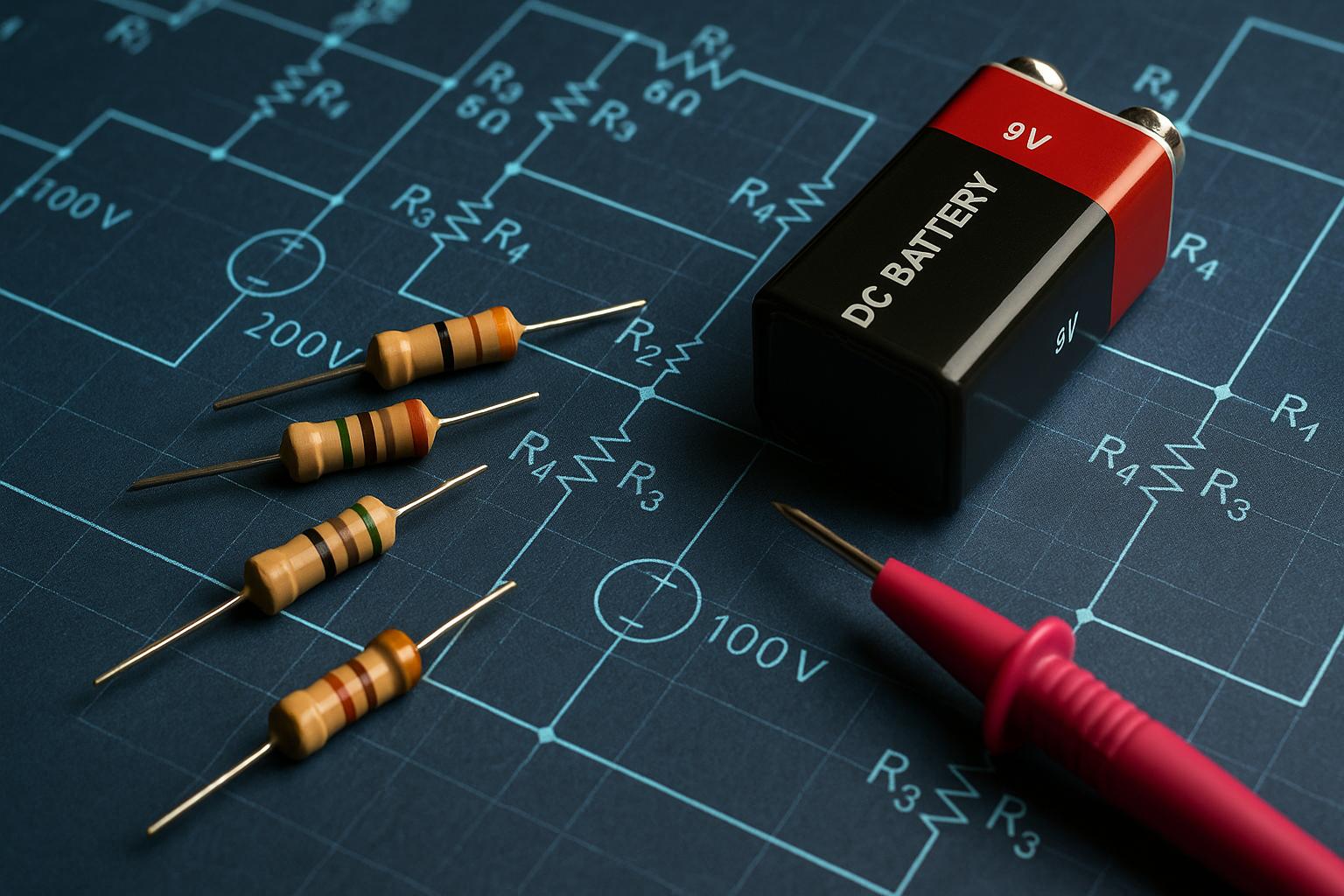The world of electronics can be intimidating with the number of equations and complex schematics. In practice, however, many methods boil down to simple principles that make life easier for engineers, students and enthusiasts. One such method is Thevenin’s Theorem – a tool that allows even complex electrical circuits to be simplified in a simple way.
In this article I will show you what this theorem is, how it works and why it is still used in circuit analysis. Instead of formulas, I will focus on logic and practical examples. This will make it easier for you to understand the meaning of the method and see how it can be useful in your daily work or study.
Thevenin’s theorem – what is it?
Imagine an electrical circuit full of voltage sources, currents and resistors. At the end of this circuit is a load element – for example, a light bulb or an additional resistor. If you want to know how much current will flow through it, you are in for a long journey through dozens of calculations. This is where Thevenin’s Theorem comes onto the scene.
The theorem says that instead of analysing the whole complex circuit, you can replace it with a simple model. This model consists of just one voltage source and one resistor connected in series. The whole magic is that such a simplified circuit behaves exactly the same from the point of view of the load element. It’s like creating a ‘miniature copy’ of the entire network that retains key properties.
Why use Thevenin’s Theorem?
Thevenin’s theorem is not just an academic trick. In practice, it has many benefits:
- Allows you to quickly check how the current or voltage changes when you connect different loads.
- It simplifies the analysis of complex electrical networks, saving time.
- It helps in the design of systems where you want maximum power transfer, such as amplifiers or power supplies.
- Facilitates visualisation – it is easier to understand the circuit when you see it in a simplified form.
As a result, the method appears both in academic books and in engineering practice, where time and efficiency are of the essence.
How to apply Thevenin’s Theorem?
The process of applying Thevenin’s Theorem is step by step. First, you choose two points in the circuit that interest you – these are where you connect the load. Then you remove the load to see how the rest of the network behaves. You calculate the voltage between these points – this is your equivalent voltage. Then you assess the ‘resistance as seen from the outside’, which is the resistance the network puts up with the internal sources disconnected. These two elements – voltage and resistance – form a new, simple equivalent circuit.
Finally, you connect the load again, but this time to a simple Thevenin model. The results you get correspond exactly to what happened in the original circuit. This way you do not have to go through all the calculations again.
Examples in practice
Suppose you have a circuit with several voltage sources and three resistors connected in different branches. You want to calculate the current flowing through one of them. Instead of tedious calculations, you first disconnect this resistor and check the voltage between the points to which it was connected. This is your equivalent voltage. Then you estimate the resistance of the whole circuit ‘looking’ from those points. Finally, you connect the resistor to a simplified model and simply calculate what is happening.
In another example, imagine an AC system with capacitors and inductors. Thevenin’s theorem still works, only instead of the usual resistances you take into account their impedances. This makes the method work in both direct current and alternating current.
Limitations of the assertion
Of course, like any method, Thevenin’s Theorem also has its limits. It only works for linear circuits – that is, circuits in which the elements behave proportionally. If non-linear elements, such as diodes or transistors, appear in the circuit under certain conditions, the method may no longer be effective. It is also important to remember that the Thevenin model only shows the behaviour of the circuit from the point of view of a specific load. In other parts of the network, the actual values may differ.
Why does Thevenin’s Theorem still matter?
Despite the passage of years and the development of modern simulation software, Thevenin’s Theorem remains a key tool in education and practice. It teaches simplified thinking and shows how to find simple equivalents for complex systems. In a world with increasing demands for efficiency and speed, this approach is proving invaluable.
Thevenin’s theorem does not require knowledge of complex equations to understand its meaning. It is enough to know that even the most complex system can be replaced by a simple model that works equally well in a given context.
Summary
Thevenin’s theorem is a simple way to tame complex electrical circuits. Instead of struggling with dozens of sources and resistors, you reduce the problem to one voltage source and one resistor. This gives you time, clarity and control over your analysis. It’s a tool that shows that electronics doesn’t have to be difficult at all. It is the idea that counts, not the number of formulas. This is why Thevenin’s Theorem has found its place in the canon of basic theories that every technology enthusiast should know.
